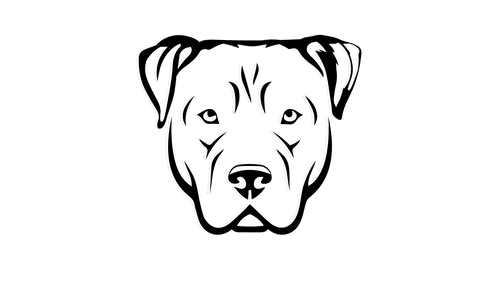If you love your dog (as all of us do) you probably have what seems like an endless amount of camera shots in your phone dedicated to them. They're cute sleeping, eating, running - pretty much doing anything. You're in love, and we can relate.
Dogs, like any animal aren't always the easiest subjects to take photos of. Their constantly moving, and you can't exactly tell them to "tilt it to the left a bit" (well maybe you can, and in that case you're lightyears ahead of most of us) so they can be hard to get clear and concise shots of. That means that when you go on instagram and get to scrolling, you realize just how much work goes in to the immaculate, effortless photos that you see from some of the top dog accounts. But it's not rocket science! with some knowledge and lots of practice, you can definitely work your magic and get some great photos of your dog. Let's start from the beginning.
1. Get your dog used to the camera.
Dogs naturally look away from things that make them feel uncomfortable. The camera or cellphone you're using blocks your face, and they're no longer looking at you. They don't understand that the goal is to look at that little black box you're holding, so you have to get them comfortable with seeing it, and realizing that it means good things. This means bringing - you got it - treats. Holding treats or a toy above the camera is a great way to get them focused, and progressing to having them stay in a position with their focus on you will allow you to back away and get a better overall photo. Start small; if you're using a camera and not a cellphone, take a lot of photos so they're used to the clicking sound. once they know that looking in your direction and holding their position gets them a treat, they will continue to do so.
2. Get down to your dog's level.
Getting eye level will always produce a better shot of your dog; except when you're shooting an aerial view (them looking straight up at the camera) and that means getting WAY lower than you ever would taking any other photo. It avoids getting the "bobblehead" look and really showing your dog in the best perspective. This is probably the time that your dog will most want to come near you, so it's best to incorporate this into your training when getting them used the camera.
3. Lighting is everything.
As a general rule, dawn and dusk are the best times to take photos in natural light. But with dogs of all different colours, lighting tips and tricks are different. Stay away from using flash at all costs. It's better to take a dark photo and be able to lighten it, than to take an overexposed one. Dogs will produce red or green eyes when in direct light of a flash, and it can really ruin the photo. White and Black dogs are notoriously hard to shoot because of their stark contrast; darkening the exposure (aperture) on your camera will help with white dogs, and increasing it under natural shade will help a black dog. Direct sunlight is best when it's behind you, and not directly on the dog - especially if you're using a cellphone and unable to control your exposure.
4. Keep your dog in focus.
The eyes. Aim for the eyes. If you're on a cellphone with a touch focus, continuously touch the face on your phone. If you're on a camera, maintain the focus on the eyes. Brachycephalic dogs or dogs with flatter faces (like bulldogs) are photographed best with the dog looking directly at the camera, while longer-snouted dogs (like dobermans) photograph better from the side, or slightly tilted to one side in their shot.
5. Let them guide the photos.
It takes many photos to get a good shot. Don't force them to sit in the same position for 30 shots; they'll get bored and it will come across in the photo. Allow them to move, and you'll get way more natural photos. By constantly focusing and shooting, you'll have a ton of images that you can sift through to find the right "got it" photo. It takes a lot (and we mean a lot) of photos that weren't great to get one that is, and that's okay! It's meant to be fun, so enjoy yourself and keep the momentum positive with your dog.
6. Don't overdo it in editing.
The goal is to have the photo looking as natural as possible, and sometimes when you start editing you can overdo that when you get into replacing backgrounds, throwing on multiple filters and dulling out the image. Keep edits to a minimum, and play around with settings that work best your dog and the colours of the photo. Applications like Adobe Lightroom can really take your photos to the next level, but even free cellphone applications like Lightleap (an upgrade is also available for a cost) can do the trick.

